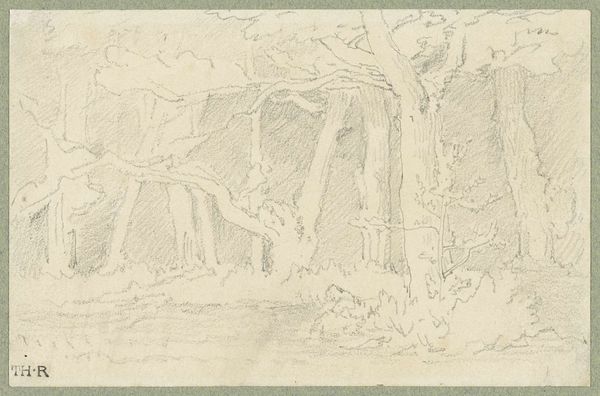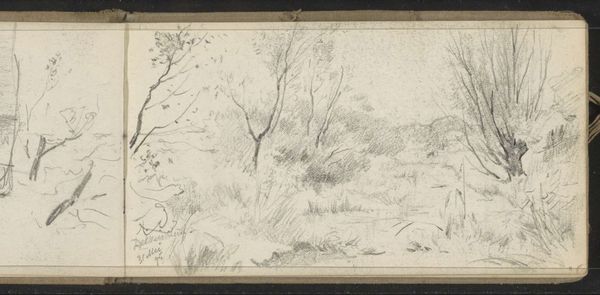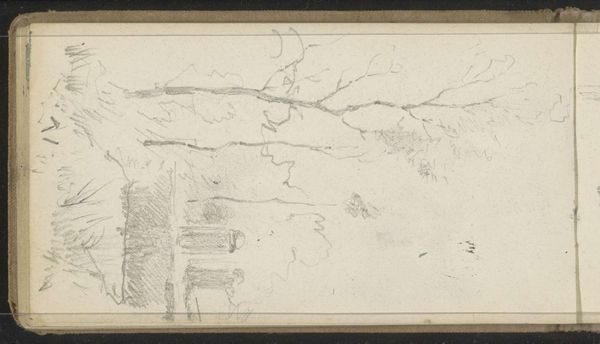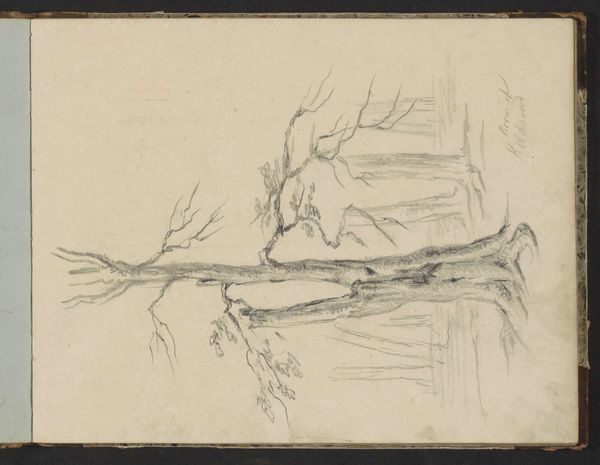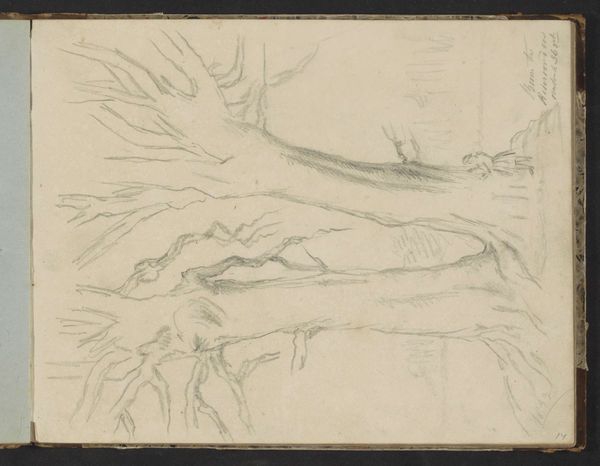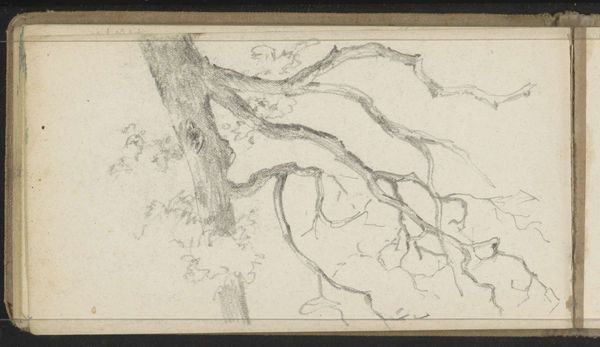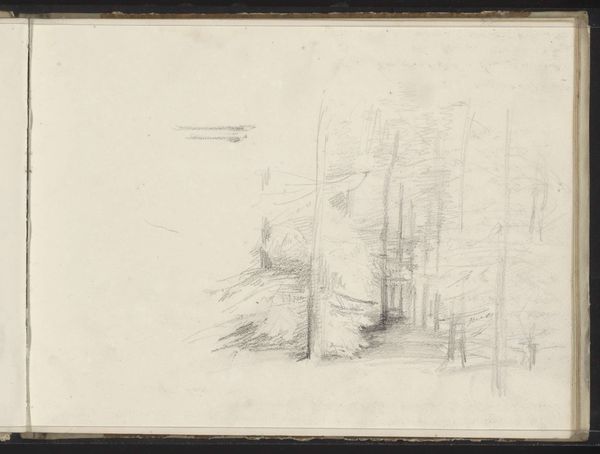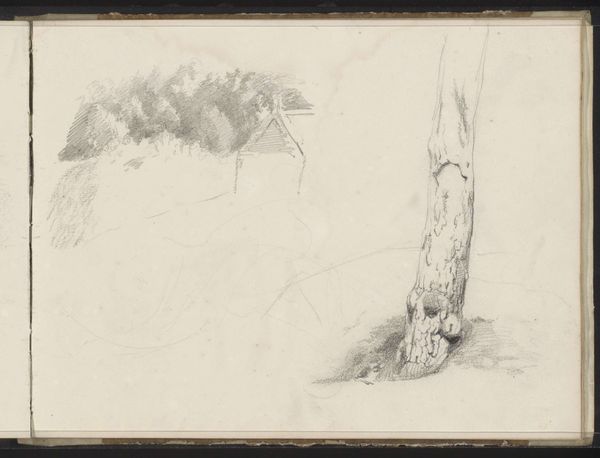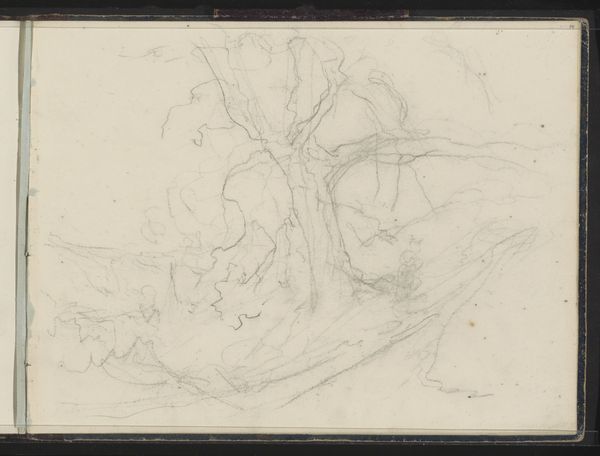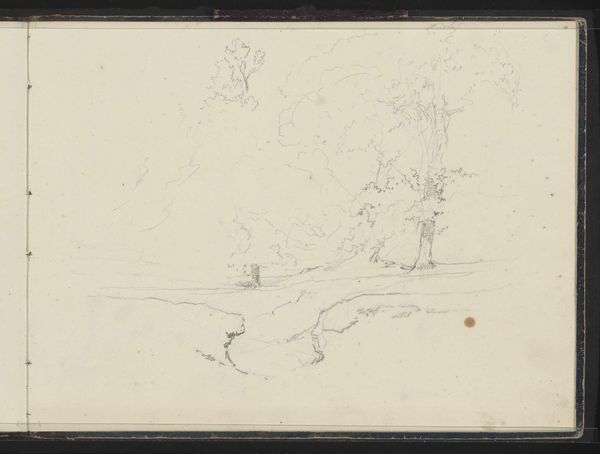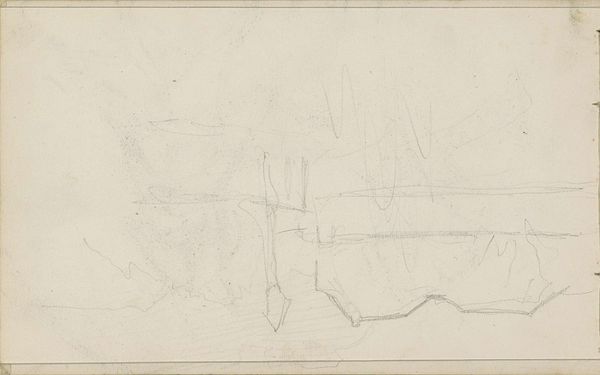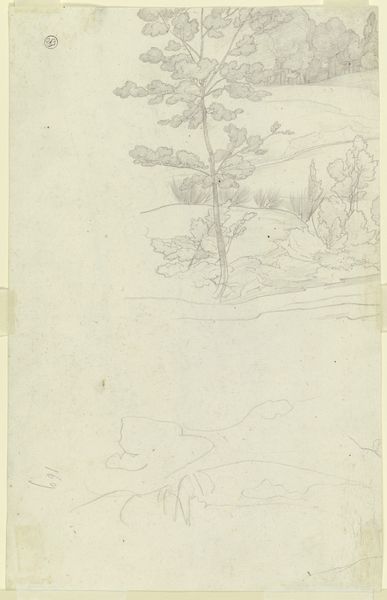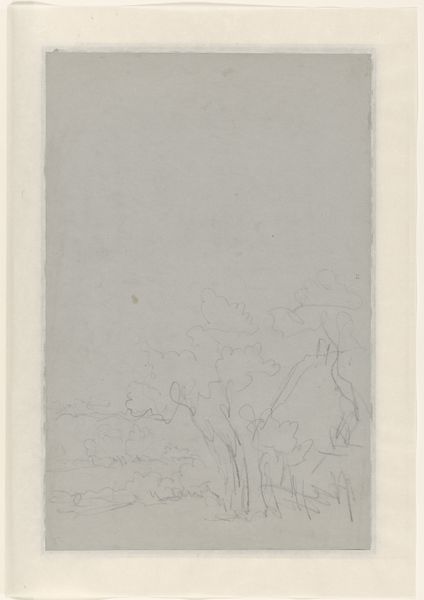
drawing, pencil, graphite
#
drawing
#
landscape
#
coloured pencil
#
pencil
#
graphite
Dimensions: height 104 mm, width 179 mm
Copyright: Rijks Museum: Open Domain
Editor: Here we have "Bomen," or "Trees," created in 1895 by Willem Cornelis Rip. It seems to be graphite, pencil, and maybe even colored pencil on paper. The light touch of the drawing gives it a dreamlike quality, but I'm curious, what's your interpretation? Curator: As a materialist, I am particularly drawn to the humble materials – the graphite, the pencil – used in this sketch. Rip’s choice to render this landscape in such an unassuming manner speaks volumes. What sort of social pressures could have influenced an artist towards more humble mediums such as graphite and pencil? Consider the paper itself – its texture, its likely origin. Editor: That's interesting, I was so focused on the subject matter that I barely considered the physical materials. Curator: Exactly! Were these readily available? Expensive imports? Each choice contributes to the narrative. Think about the labor involved in procuring these materials, manufacturing the paper, processing the graphite into usable pencils. These are all social considerations reflected through the objects themselves. The consumption of this material informs how art is appreciated. Editor: So, you're saying the very act of creating this sketch is tied to broader economic and social forces? Curator: Precisely. We often divorce art from the practicalities of its making, but understanding the materials and the process reveals the conditions in which the artwork came to be. How did these materials make their way to Rip? Did the cost dictate the scope? Editor: I'm beginning to see how a seemingly simple sketch can offer so much insight into the art's cultural landscape through its materials. Thank you. Curator: My pleasure, remembering to question an artist's choices is essential.
Comments
No comments
Be the first to comment and join the conversation on the ultimate creative platform.
